Dracula's Daughter, The Raven (1935, 1936)
Directed by: Lambert Hillyer, Lew Landers
Written by: Bram Stoker, David Boehm, Edgar Allan Poe, Garrett Fort
Starring: Bela Lugosi, Boris Karloff, Gloria Holden, Lester Matthews, Marguerite Churchill, Otto Kruger
Professional dancer Jean Thatcher accidently wraps her car round a road sign and is seriously injured. Her father Judge Thatcher and her fiancée Jerry Halden, implore retired surgeon Richard Vollin to perform a delicate operation to restore her to health. Vollin, who has a passion for all things Edgar Allan Poe to the point of even having torture chambers based on his stories, agrees, but becomes besotted with Jean. When the Judge warns him off, Vollin is hurt and angry. A murderer on the run, Edmund Bateman, then comes to Vollin’s home asking for a new face so he may live in anonymity. Though not a plastic surgeon, Vollin can alter appearances by altering the nerve ends, and operates on Bateman’s face. However, Bateman awakes to find his face very disfigured, and might now be the monster who can help Vollin exact his revenge……….
The Raven was the third and last of Universal’s Edgar Allan Poe-inspired films, and is perhaps the middle movie in quality, distinctly better than The Murders In The Rue Morgue but not as impressive as The Black Cat. It’s quite similar to the The Black Cat, with lovers held captive in a house full of strange amenities by a mad man who is infatuated with the heroine, but tones down the strangeness and extreme content, though make no mistake it’s quite a strong movie in its own right. A good case can be made for it as the most sheerly enjoyable of the three movies, and it’s certainly the closest to Poe. No, it’s not a cinematic expansion of Poe’s brilliant poem of the same title, but it’s full of themes and ideas from Poe and actually comes across partially as a kind of tribute to the great writer. For those not versed in the work of the great man, it’s still a very entertaining and quite lurid dabbling in timeless horror themes such as madness, disfigurement and obsession, as well as being perhaps the first torture movie, elements of which you can see in the Saw films and their like. It also has possibly the best ever performance by Bela Lugosi, one which to me is even better than his Dracula.
The Black Cat had been a huge hit, despite having to be drastically cut down, and so it was only right that Universal would want to repeat the box office success but not the trouble beforehand. Therefore, instead of an auteur like Edgar G.Ulmer, they hired journeyman director Lew Landers [who went on to become mostly known for making cliffhanger serials] to direct the movie, though of course Boris Karloff, billed again as KARLOFF, and Bela Lugosi returned, though by this time Lugosi wasn’t regarded nearly as highly by Universal as Karloff, only receiving half his salary. Chester Morris was originally cast in the ‘obligatory dull romantic lead’ role Jerry Halden before being replaced by Lester Matthews, though the character is mispelled Jerry Holden in the credits, and the on-screen billing also switches the character names played by Spencer Charters and Ian Wolfe – Charters actually portrays Colonel Bertram Grant, while Wolfe appears as Geoffrey “Pinky” Burns. Poe’s poem bore little relation to the finished script by David Boehm, but it was then amended by a total of six writers. It seems that, along the way, Universal decided to exploit the Poe connection more than anything else and wanted more and more of Poe in the film. As they went further and further down this path they ended up shooting themselves in the foot when they even recommended that teachers take school children to the movie. While The Raven had no trouble getting through the censors unscathed, it kicked off a series of arguments about the suitability of horror films for even adult audiences, and this time the public, despite normally being hungry for sensation, opted to stay away. In the UK, it was banned and was even debated in Parliament.
The Raven gets into its story quickly, though it’s a while before anything exciting happens. Instead, we watch for a while a rather dark love story, albeit one that seems a little influenced by the same year’s Mad Love [now there’s a neglected classic!]. Vollin falls for Jean immediately, something emphasised by quite a few close ups of his eyes, but more interestingly she seems to fall for him briefly because he has saved her life, a situation that is not uncommon. When he goes to put his arm round her, she recoils, but is still infatuated in a wierd way, and works some of this out by performing a dance called ‘The Essence Of Poe’ on stage which gets more and more frenzied. Wearing a bizarre getup that includes a mask, cloak and a golden cap, this rather strange scene is sadly the climax of this part of the story, and I almost wish the film had carried on with this intriguing combination of psychological drama and unusual love story. However, this is of course a horror film, so the heroine must soon begin to fear the villain, though he really doesn’t seem too bad until he operates on Bateman. Though it’s wonderful to see Karloff and Lugosi engage in possibly the longest dialogue scene they ever had together, it’s hard not to laugh when Vollin talks of nerve glands at the back of the neck which, if moved around, can alter a person’s appearance, and how he can do this in ten minutes! Still, this is followed by an absolutely tremendous scene of horror that still packs a punch today.
Bateman’s face is covered in bandages, but through them you can see one eye, but only one eye, positively glistening with anticipation. Vollin unwraps the bandages, revealing that one side of Bateman’s face is very disfigured. Vollin disappears, Bateman stands up and lumbers into the next room which [for some reason] happens to be full of huge mirrors, and Bateman looks in each one, seeing his hideous features looming out at him each time, while Vollin can be heard laughing horribly. For sheer intensity, this scene is hard to beat in films from the time, and the rest of The Raven doesn’t quite measure up, though it’s never dull and should entertain and surprise many of those modern viewers who sadly consider films of this vintage to be boring. As a group of people – including Jean and Jerry – become guests in Vollin’s house and are soon trapped, the entire second half of the film moves at a lively pace. Strange features in this initially not that strange-seeming house, from secret doors to a Pit And The Pendulum [the Poe tale where a man is tied down while a circular knife swings above him, getting lower and lower…..] –inspired torture room to another door that opens into a long drop, reveal themselves in quick succession. Soon, most of the guests are in great, sometimes mortal jeopardy, except for one old couple who sleep through the whole thing and provide the film’s only real comic relief.
Now Karloff, as before, was billed above Lugosi, but this is really Lugosi’s film. His typically unrestrained acting is totally suited to his egomaniac [and simply maniacal] character, but there is so much emotion in his performance, really making this psychopath into a fully rounded character. The film opens with him reciting the original poem of The Raven, and he does it with such great feeling, his thick Hungarian accent somehow suited to the words, that he seems to distil the essence of Poe in a way that nearly matches Vincent Price. Later on, he tells – ostensibly of Poe and mixing in elements of his short story Lenora – but more so of himself, speaking of the madness that can grip a genius and can drive him to torture, and he delivers the speech brilliantly, full of pathos but getting increasingly frightening with it. Of course he is truly terrifying in the scenes where he clearly intimates that he gets an almost sexual kick out of torture, and his laugh is horrifying. Like The Black Cat, this was another film that I always missed when it was on TV, and seeing it for the first time, I was struck by how great Lugosi’s performance was. It’s such a shame that he soon became willing to act in any old rubbish, and that his career never scaled the heights of the early 1930s.
Of course Karloff is excellent too, again deriving much expression from his eyes, or rather one eye. Unlike Lugosi’s character – who starts off just a little wierd and gets progressively more scarier – Karloff’s begins rather nasty, casually saying “You can’t help doing things like that” when talking about killing someone with a blowtorch, but gets more and more sympathetic as the film goes on. Though we are told that “An ugly man does ugly things” – which is a common horror principle – Bateman’s own infatuation with Jean does not result in the expected, but is the cue in him finding some goodness within himself and eventually his redemption. The rest of the cast just fare okay, including Irene Ahlberg who is adequate as Jean. Heinz Roemheld of The Black Cat also composed the score for this movie, though “composed” is probably too strong a word, as it’s mainly The Black Cat music reused, including a couple of it’s classical music quotes. Efficiently rather than interestingly directed by Lew Landers, who doesn’t put much of a personal stamp on the movie, The Raven still remains old-style Gothic horror of the most entertaining kind, as well as one of the best and [in its own way] one of the most faithful Poe-related movies ever made.
Professor Van Helsing has just staked Count Dracula through the heart, but is taken by police to Scotland Yard. His story is not believed and instead of hiring a lawyer, he calls a psychiatrist, Dr Jeffrey Garth, who was one of his star students. One of the two constables guarding Dracula’s body is called away to meet Jeffrey, and the one remaining is hypnotised by a certain Countess Marya Zaleska, who is Dracula’s daughter, who then removes her father’s body with the assistance of her manservant Sandor. She burns his body in the hope it may break her curse of vampirism, but it doesn’t work and she resumes her old habit. After a chance meeting with Jeffrey at a party, she asks him to help her overcome her cravings……….
A somewhat better film than Dracula despite being much less seen and known, Dracula’s Daughter is a nicely downbeat, moody vampire film that was the first film not only to have a very sympathetic vampire but to emphasise a romantic element, something that is usually thought of as a more recent thing in Dracula and Dracula-related movies. Absolutely brimming with Gothic ambience and casting a haunting power from beginning to end, it’s not the most exciting of films, but nonetheless moves at a fair lick throughout its brief running time and has some fascinating elements that, partly due to its short length [albeit a length similar to what most of these Universal horror pictures had], it isn’t really able to deal with fully. It is, though, a really compelling and unusual movie that dares to go down different paths from its predecessor and really deserves much more praise than it gets.
The basis for Dracula’s Daughter was a Bram Stoker short story called Dracula’s Guest [though you could say that there are elements of Sheridan Le Fanu’s Carmilla too], which some say was a deleted first chapter of Dracula, and details a man in Transylvania who encounters a female vampire. In 1933 MGM head David O’ Selznick bought the rights and got John L. Balderston, who had scripted Dracula, Frankenstein and The Mummy for Universal, to expand the tale into a screenplay. It was not too different from what we have now but implied that the title character tortured her victims and that they liked it too. Selznick sold the script to Universal and offered the film to James Whale, but, tiring of horror films, he turned it down, even when R.C.Sheriff [The Invisible Man] wrote a new script, adding three scenes featuring Dracula. It was rejected four times by the MPAA, despite Sheriff submitting amended drafts. Knowledge of how extreme the script is hard to come by, but it seems that the sad0-masochistic element in Balderston’s script was still present. Eventually Garrett Fort was asked to write a new draft, which proved satisfactory, and journeyman Lambert Hillyer went on to direct, though shooting went ahead three weeks before the script was finished. The film also went over budget and only did average business upon release, while also being the last straw for the BBFC in the UK who put a temporary ban on horror films. For these reasons, Universal stopped making horror movies…….for a short while.
Though opening in Dracula’s castle right after the events in the first movie, the film proceeds in a rather light vein at first, with two comedy constables providing a few laughs. One is something of a ‘scaredy cat’ and the other mocks him, and though the humour is totally unoriginal, the two are still quite funny. Soon Zaleska appears though, and the film takes a turn for the serious and the downbeat. After her and Sandor have taken Dracula’s coffin from the police station – something not shown – we have a rather haunting and poetic scene of her burning the coffin on a fog strewn moor, a tableau of striking dark beauty and about as purely Gothic as you can get. Then we get a really interesting scene where she talks of remembering her childhood and Sandor reminds her – against her wishes – of how ‘dark’ it was – for instance of ‘birds’ actually being ‘bats’ – all the time while Zaleska is playing a calm piece on the piano which gets more and more agitated as she realises that burning her dad’s coffin has not taken away her vampirism. The sequence is a little corny and overdone but intriguing, and is followed by an unforgettable shot of Zaleska, shrouded in black, waiting for victims by a building. She is not frightening but sad and even pathetic, a creature whose base instincts are making her do things she really does not want to do.
The plot becomes something not dissimilar from that of The Mummy, with Zaleska falling in love with Jeffrey and wanting to make him immortal like her, though in this instance the mortal man seems quite bewitched by the ‘monster’ too. That film’s dreamlike, gliding feel is partially replicated too, though it moves a little faster and returns to Castle Dracula for a reasonably exciting climax that is sadly over too quickly. Certain plot developements involving Sandor were used in some of the sequels to The Mummy too. Even more than Dracula, this film avoids onscreen bloodshed but has two scenes that have a strong lesbian aspect. In the first one, Zaleska brings a streetwalker to her painting studio and gets her to pose for her. “You’ll do very nicely” she purrs as she can’t take her eyes off her throughout and you can virtually feel the sexual tension until she moves in to bite her. Later on, she hovers over Jeffrey’s fiancée Janet for what seems forever before they are interrupted. The implications are obvious and how they got this stuff past the censors I have no idea, unless previous scripts were so horrific it just seemed tame by comparison. The film’s convoluted script history does appear to have resulted in some confusion in places, especially with regard to Zaleska herself. The conversation with Sandor seems to indicate that she was a vampire as a girl, but then, in the very last scene, someone comments about how beautiful she is and Van Helsing says that’s because she died when she was beautiful “one hundred years ago.”
If Zaleska is a rather likeable title character, the ‘hero’ Jeffrey is a rude and careless man who is introduced to us talking of “birds in London he’d like to shoot” and treats his girlfriend pretty badly. The constant bickering between Jeffrey and Janet gives us some more laughs, such as when she pretends she’s from the zoo and rings him saying “the elephants have seen pink men” or when he is so flustered about Zaleska he can’t do up his tie and Janet does it for him, only deliberately wrong so that he looks like an idiot when he goes to see Zaleska. The earthy, vivacious Janet makes a nice contrast with the mysterious, intense Zaleska, two opposites vying for Jeffrey’s attention, though what either of them actually see in him is anybody’s guess. Director Lambert Hillier fails to totally convince us of several things in the story, but does show such an affinity for the Gothic that it’s a surprise that he made no other horror films, unless you count Universal’s The Invisible Ray, which is actually much more of a science fiction movie.
Gloria Holden, who plays Zaleska, apparently hated her role and being in a horror film, feeling they were beneath her, but strangely her discomfort translates well to the screen. Zaleska is a person full of self loathing and awkwardness, and Holden shows these attributes, whether intentionally or not, really well. Otto Kruger is more conventionally ill at ease as Jeffrey and too old for his role too, but Marguerite Churchill is a very likeable Janet and Irving Pichel a nicely sinister Sandor. Before production had started, Universal announced that Bela Lugosi was to star in the film; this did not happen, but a wax mold was made from his face for the opening scene. Heinz Roemheld’s score is considerably better than his previous two efforts. It’s all original music for a start, and has some pieces that really help create the film’s odd spell, such as the dirge-like, very tragic main theme, which really underlies the fact that this is a romantic tragedy as much as anything else, the strange, almost atonal string movements for early bits in Dracula’s castle, and the rather beautiful, if sombre, cue for the burning of Dracula’s body. Perhaps there’s too much music by today’s standards, but it’s a good effort, much like the film itself. Though no masterpiece, it’s still a minor classic that, as with Bride Of Frankenstein, proves that sequels often can equal and even better their predecessors. Haunting and poetic, it has a strange, hypnotic power all its own.


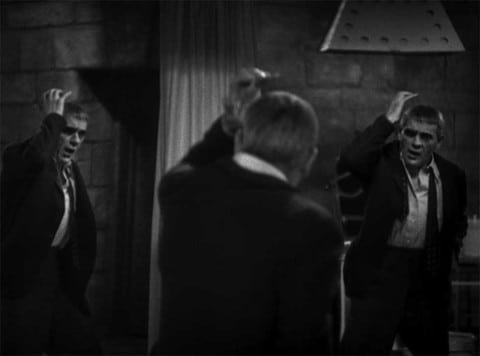
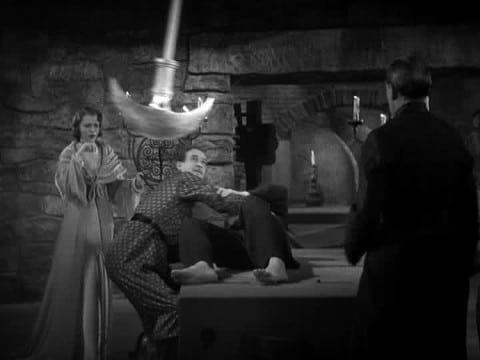


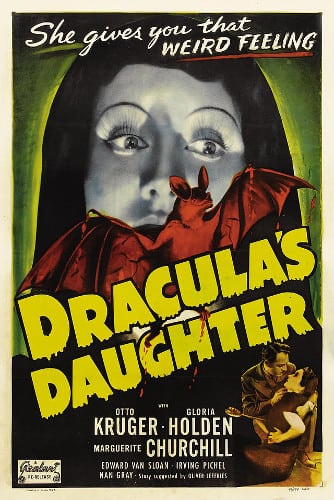
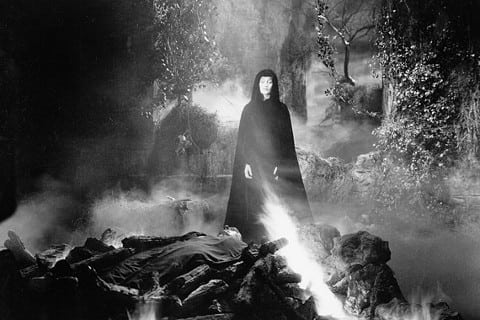
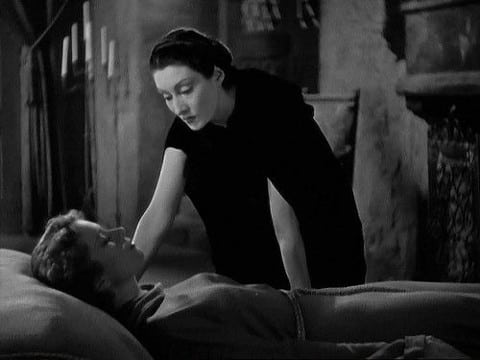

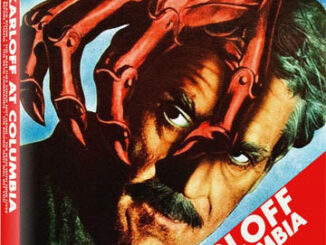
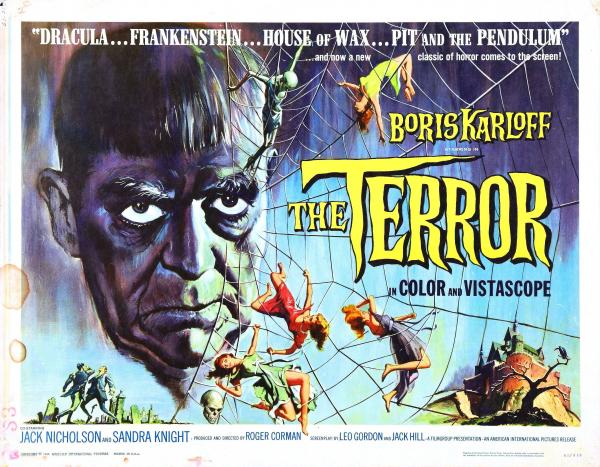
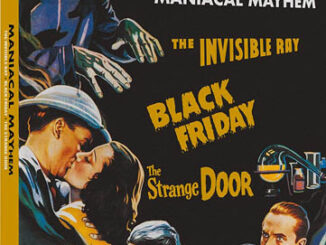
Be the first to comment